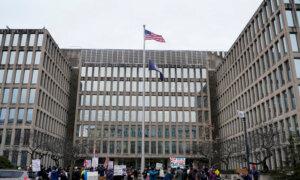The exact numbers were not disclosed.
The Department of the Treasury is working on plans to fire a substantial number of workers, according to an official, who said the terminations are in response to President Donald Trump’s Feb. 11 executive order to optimize the federal workforce.
The Treasury Department did not respond to a request for comment.
U.S. District Judge James Bredar, who is based in Maryland and is presiding over a case brought by attorneys general against 18 agencies that fired workers, recently ruled that the firings were illegal because states were not provided with advance notice and because the government did not carry out assessments for each employee.
Officials in a status report earlier in March said they had either undertaken or completed reinstatement. Bredar said the report showed the government had made “meaningful progress” and ordered officials to give him another update by March 25.
Norris’s declaration was filed with the court with updates from officials with the other agencies, including the U.S. Environmental Protection Agency and the U.S. Department of Agriculture.
Norris said that the RIFs would be seniority-based, so they will likely primarily fire probationary workers who were just reinstated.
“In some case, bureaus may determine that the likelihood of certain reinstated probationary employees being separated is sufficiently high that restoring them to full duties in advance of the planned RIF would be unduly disruptive to both the employees and the bureau,” he added.
None of the other officials outlined plans for future mass terminations.
Those officials said that many of the fired workers have been reinstated, although many are on administrative leave. Officials say they’re working to bring back the workers in waves to account for all the tasks that need to be completed, such as reissuing identification cards.
Some 221 workers who would have been reinstated chose to resign, including 51 Treasury employees. Another nearly 100 are still unsure whether they’ll keep working for the government, did not respond to notices of reinstatement, or are being fired due to performance issues, officials said.
The declarations “demonstrate that Restrained Defendants have achieved substantial compliance with the terms of the” restraining order, government lawyers told Bredar.
The status report came as attorneys general asked the judge to enter a preliminary injunction, which is similar to a restraining order but more permanent and potentially broader.
The state lawyers said that they’ve proven the government violated the law in states across the country because officials did not comply with the law when conducting the RIFs, including not allowing employees to compete for retention.
“Beyond critical deficiencies in standing, Plaintiff States fail to establish a likelihood of success on the merits, because they simply cannot show that Defendants’ actions triggered the statutory RIF Notice requirements,” they wrote.
Original News Source Link – Epoch Times
Running For Office? Conservative Campaign Consulting – Election Day Strategies!


